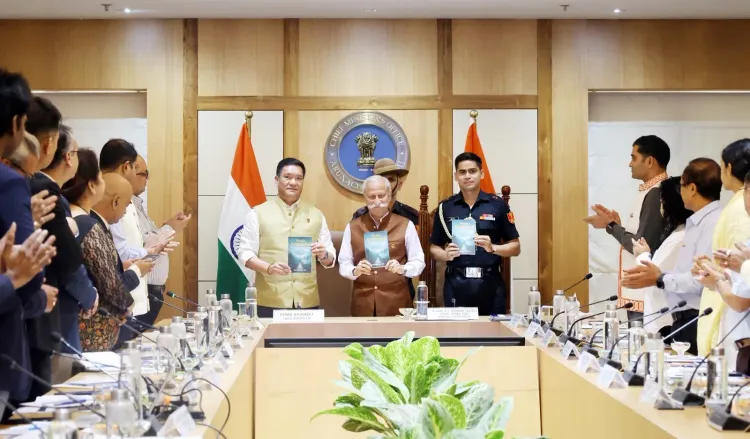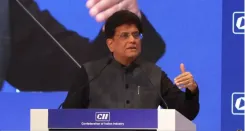How is Arunachal Pradesh Advancing with Strong Economic Indicators?

Synopsis
Key Takeaways
- 166% increase in Gross State Domestic Product (GSDP) since 2014.
- 141% rise in GST taxpayers since 2017-18.
- 105% increase in per capita income since 2016.
- 731% surge in GST collections since 2017-18.
- 218% growth in budget allocations from 2015 to 2026.
Itanagar, July 15 (NationPress) The Chief Minister of Arunachal Pradesh, Pema Khandu, announced on Tuesday that the state has experienced considerable economic growth over the past 11 years, with the Gross State Domestic Product (GSDP) soaring by 166 percent from 2014 to 2025.
In a post on X, the Chief Minister highlighted, “Arunachal Pradesh is advancing with robust economic metrics.” He shared that since 2017-18, the number of Goods and Services Tax (GST) taxpayers has surged by 141 percent, and per capita income has escalated by 105 percent since 2016.
Based on the data provided by Khandu, GST collection has witnessed a remarkable increase of 731 percent following the introduction of the new tax system in 2017-18. He also noted that the State's Own Resources (SOR) have expanded by 384 percent between 2014 and 2025, alongside a 218 percent rise in budget allocations from 2015 to 2026, showcasing the government’s commitment to inclusive development and public welfare.
The Chief Minister characterized this period as “a decade of transformative growth,” attributing these accomplishments to “resilient development and fiscal prudence.”
In a separate discussion on ‘Leveraging Skill Development and Entrepreneurship Potential in Arunachal Pradesh,’ Khandu emphasized the government's focus on green investments that not only safeguard Arunachal’s rich natural resources but also promote economic advancement. He stated that the state is prioritizing sustainable development while exploring avenues for leadership without compromising its ecological legacy.
Khandu remarked that, thanks to Prime Minister Narendra Modi’s initiatives, Arunachal Pradesh has experienced significant improvements in infrastructure, connectivity, and socio-economic progress. He encouraged today’s youth to become job creators rather than mere job seekers.
Additionally, the Chief Minister, alongside Governor Lt. General KT Parnaik (Retd.), launched a book titled ‘Mystic Arunachal – Tales from India’s Hidden Frontier,’ authored by Major Rahul Jha, who currently serves as the ADC to the state’s Governor.










